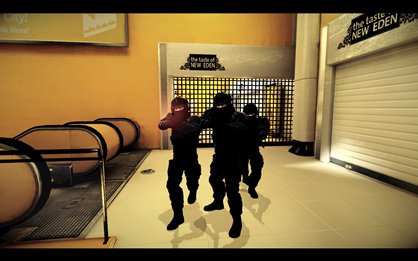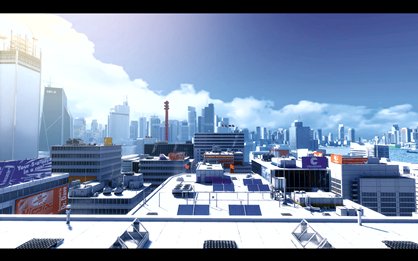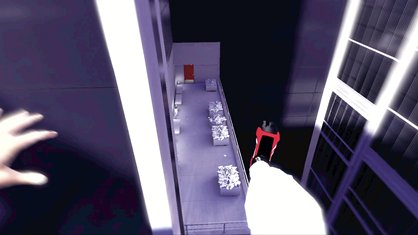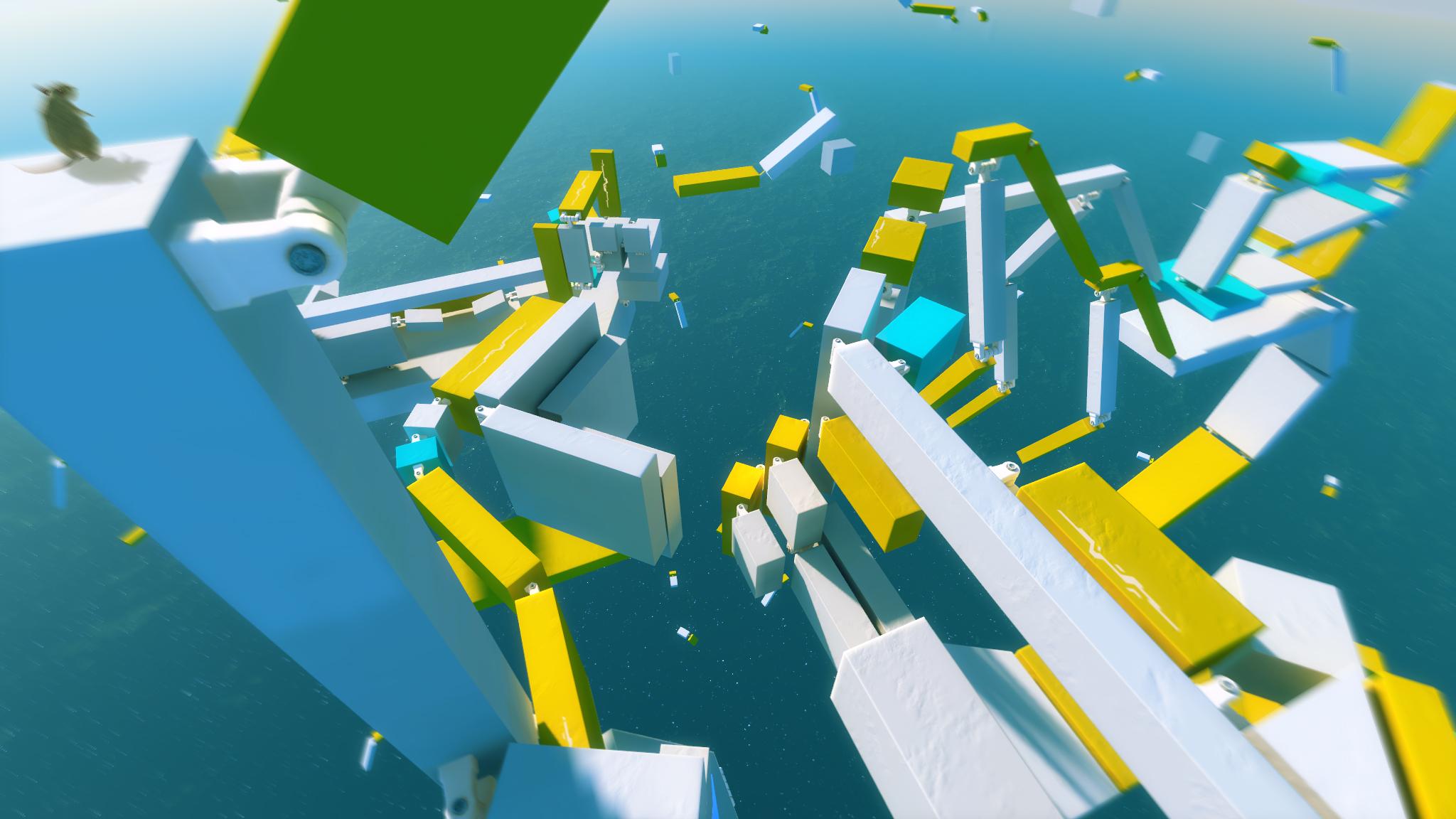GamesRadar+ Verdict
Pros
- +
Starkly gorgeous visuals
- +
Something new in first-person games
- +
Exhilarating when it works
Cons
- -
It's a bit short
- -
Some frustrating moments
- -
Doesn't quite live up to hopes
Why you can trust GamesRadar+
The early levels of Mirror’s Edge are the ones that best communicate the joys of the game, because they’re the ones that best deliver the free-running dream. That is: you, in an urban environment, gracefully inventing your own path from point Here to point Over There. You hop over fences, slide under pipes, run along walls, rebound off buildings and vault from ledges – all of it ideally without breaking stride and all of it from a first-person perspective. It’s smooth, fast, exhilarating, and its creators do it wrong, all wrong.

The main character is Faith, a Runner. Runners are acrobatic postmen, traveling via rooftops to illegally deliver messages the sender doesn’t want intercepted by the spying government regime. Faith’s sister is on the other side, a police officer who’s framed for murder. That prompts Faith to investigate. Cue lots of running. While that’s all fine, the real star is the unnamed city in which all this takes place. It’s the playground you’ll be bounding across, its insides a mixture of primary colours and modernist furniture, its outsides sparkling like a glitterball. Most dystopian futures in computer games are bleak, ruined worlds, but there’s a tangible reason why more of this city’s residents haven’t rebelled: because it’s a really, really nice place. Who wouldn’t want to live here? Even the rooftops are swept clean.
You’re assisted by something called Runner Vision, which highlights certain items of scenery in red. A ropeline that can be slid down, a pipe that can be climbed, a handily placed chair that can be used as a springboard. Runner Vision makes snap decision-making easier, but the levels still encourage a thoughtful mode of play. You want to stop, look around, work out how to get up there and then implement your solution. You want to play it like you might play Portal, as a series of environment-based puzzles.
Instead, the game becomes infested by cops and snipers and SWAT teams and helicopters, all serving to hurry you along. The initial levels are direct enough that you can work out where to go while sprinting, but as the environments become more complicated, the red objects also become less overt. You want to stop more, but the enemies never let you.

Imagine you were playing arcade racer TrackMania and while arcing from one ramp to another, police started shooting you. More directly, imagine you were having fun and then people came along and started shooting you while you were having fun. Running is great, being constantly pressured in to running away is not so much. Yet it proves unavoidable. Each chapter is structured in basically the same way, with you bounding to the top of a building and then having to flee when the cops – or ‘blues’ – burst in to bust you. This frequently involves them coming through your only exit point, meaning you either have to run past them or go through them.
Going through them means punching and kicking them to the ground, or performing a disarm move. Disarming is essentially a quicktime event, accomplished by hitting the right-mouse button when their weapon turns red mid-attack. The addition of Reaction Time, better known as bullet time, slows their movement and makes this much easier. Regardless, it’s satisfying to watch your leg appear from the bottom of the screen and slam your opponent’s head in to the ground. You can then either use your newly acquired gun to dispatch the other enemies or toss it to one side immediately. The weapons are forgettable, but discarding them lets you effect the same awesome nonchalance of characters in The Matrix.
Note that we’re saying nothing bad about the implementation of combat. It’s clear that the developers don’t want this to be thought of as a traditional shooter: there’s no way to reload your gun and carrying it slows you down, hindering your ability to perform jumps. Yet although you’re armed with the perfect skills for evasion, this also isn’t a stealth game where you can avoid alerting enemies. While it’s possible to complete the game without firing a single shot, for pure reasons of convenience you’ll likely turn to aggressive solutions before too long.

The issue is that the combat hinders rather than enhances the core pleasure of the game. It’s precisely because the rendering of free running is sublime that its constant, violent interruption is so frustrating. The world feels physically solid in a way other games don’t. Walk close to a surface and your hands will raise and press against it. Fall slightly short on a jump and your arms will reach out and scrabble at the surface to pull you up, while falling slightly shorter still has you gripping the ledge with just your fingertips. Try to wall-run on an uneven surface and you’ll slip and end up on your backside - not hurt if the ground was close, simply embarrassed by your clumsiness. The quickening screen bob as you gather speed, the sound of shoe slapping on concrete, even the way your screen tilts and turns: there’s an attention to detail here that places you firmly within this beautiful city. And it gives you the means to perform stunning acrobatic feats.
More info
| Genre | Action |
| Description | It’s ambitious in a multitude of ways, both in making a platformer from a first-person perspective and in its implementation of free running. It’s really, really good and you should play it, but damn, it could have been superb. |
| Platform | "PC","Xbox 360","PS3" |
| US censor rating | "Teen","Teen","Teen" |
| UK censor rating | "16+","16+","16+" |
| Release date | 1 January 1970 (US), 1 January 1970 (UK) |



